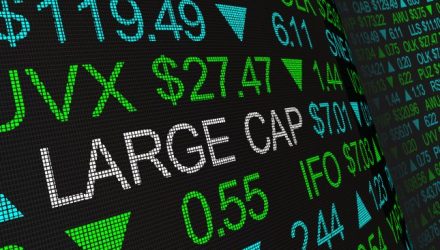While crude oil has been the main event in markets on Monday, stocks have been slumping as well, after closing higher on Friday.
The Dow Jones Industrial Average was off about 1.2% as of 1:30 pm EST, after falling lower in the overnight session, as tensions over the coronavirus and oil remain high. The S&P 500 was also down nearly 1%, having lost more than 2.5% since Friday before attempting to bounce back some. The Nasdaq Composite has remained largely unchanged from Friday’s close.
The Invesco QQQ Trust (NASDAQ: QQQ) is flat on the day, while the SPDR Dow Jones Industrial Average ETF (NYSEArca: DIA) lost 1.27%, and the SPDR S&P 500 ETF (NYSEArca: SPY) fell 0.73%.
Despite the move lower Monday however, the S&P 500 has rallied more than 32% off the lows in March, putting prices about where they were a year ago, despite dramatic twists and turns in trade, and the unprecedented economic and health implications of the coronavirus.
The large companies that make up the index could be helping it to weather better than other indices, according to experts.
“Large US public companies are better insulated from economic dislocation than either smaller ones (Russell) or European/Asian businesses that have to rely on less liquid capital markets and undercapitalized banking systems,” Nicholas Colas, co-founder of DataTrek Research, said in his daily market note.
“The bottom line: as much as fiscal/monetary stimulus has pride of place in explaining asset prices, that rising tide has not lifted all boats equally. We continue (as we have from 2017) to recommend US large caps over other equity asset classes,” Colas added.
In addition to looking at benchmark ETFs like the SPDR S&P 500 ETF Trust (SPY), this may mean that investors looking for more large cap options could consider ETFs like the Schwab U.S. Large-Cap ETF (SCHX), the Invesco S&P 500 Low Volatility ETF (SPLV), or the SPDR Portfolio S&P 500 Growth ETF (SPYG).
Despite the sizable rebound stocks have made this year so far, analysts still caution investors that there could be more downside to come, and not to be too cavalier with assets.
“The bottom line is that given we are facing the deepest recession and highest unemployment rate since the war and equities were not exactly cheap before the virus hit, we think it unlikely that we get away with ‘only’ a [15%] fall in the S&P,” wrote Inigo Fraser Jenkins, co-head of portfolio strategy at Bernstein Research. “We think we will face an extended period of higher volatility and also think it highly likely that we see a pull-back in the near term as the difficulties of exiting lockdown (or the risk of a re-imposition of lockdown) become apparent.”
For more market trends, visit ETF Trends.
